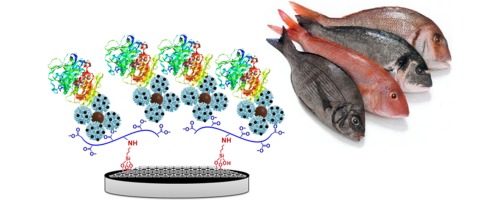Boryana Borisova, Alfredo Sánchez, Sandra Jiménez-Falcao, Miriam Martín, Pedro Salazar, Concepción Parrado, José M. Pingarrón, Reynaldo Villalonga
Sensors and Actuators B: Chemical, 232 (2016) 84-90
doi:10.1016/j.snb.2016.02.106
The assembly of a novel layer-by-layer biosensor architecture using hybrid nanomaterials is explored for the construction of an amperometric enzyme biosensors. The nanostructured sensing interface was prepared with poly(dopamine)-modified magnetic nanoparticles which were covalently coated with four-generation ethylenediamine core polyamidoamine G-4 dendrimers and further decorated with platinum nanoparticles. This nanohybrid was fully characterized and further layered on glassy carbon electrodes coated with a graphene oxide-carboxymethylcellulose hybrid nanomaterial through electrostatic interactions. The nanostructured surface was then employed as scaffold for the covalent immobilization of the enzyme xanthine oxidase through a glutaraldehyde-mediated cross-linking. The enzyme electrode allowed the amperometric detection of xanthine in the 50 nM–12 μM range, with a high sensitivity of 140 mA/M cm2 and low detection limit of 13 nM. The biosensor exhibited high reproducibility and repeatability, and was successfully tested for the quantification of xanthine in fish samples.


